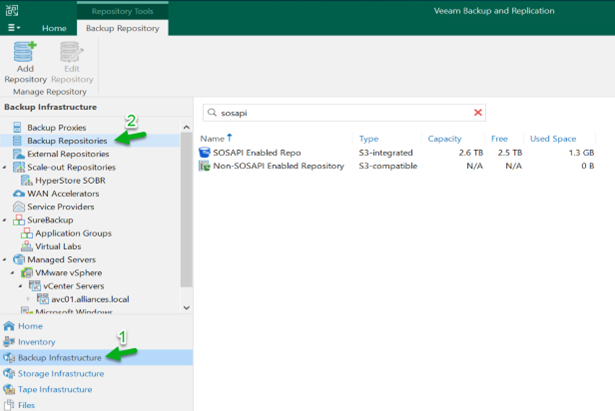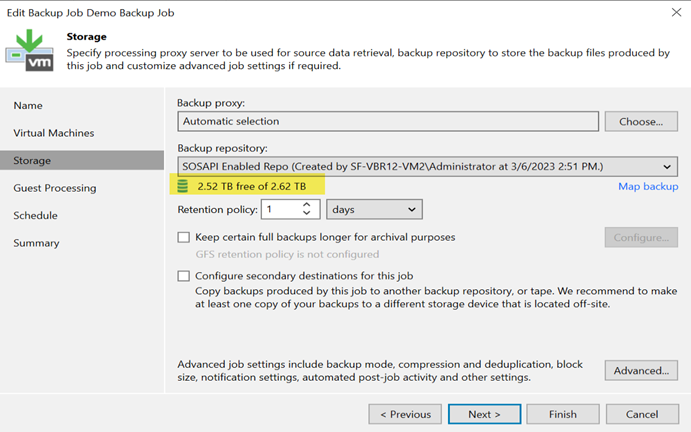Introducing Veeam’s Smart Object Storage API
Veeam Backup & Replication (VBR) v12 which was launched a month ago, has many great features and new capabilities. One of my favorite features is the Smart Object Storage API (SOSAPI). The purpose of this blog is to introduce you to this new and powerful feature.
Let’s that off with explaining what the Smart Object Storage API (SOSAPI) is. It is a new tool which allows Veeam and our on-prem object storage partners to develop tighter integrations between our products. So, the great part about the SOSAPI is that a customer doesn’t need to do any additional work to get the benefits of this great addition to the Veeam portfolio.
However, you do need to select an object storage platform that has the SOSAPI implemented within their product. When VBR v12 was launched last month, Scality and Object First were the inaugural launch partners for SOSAPI. Cloudian also released a version of their object storage which was integrated with the Smart Object Storage API when v12 was launched. We expect many more on-prem object storage partners to follow suit. When the Veeam Ready Program for v12 launches later this month, you can check the Veeam Ready site to identify what Veeam Technology Alliance Partners support the SOSAPI (https://www.veeam.com/alliance-partner-technical-programs.html).
So why am I so excited about the SOSAPI? It is a great tool that allows our Veeam and our partners to share vital information between our platforms to provide our joint customers the best solution possible.
Let’s start with how you can identify if your object storage solution has support for the SOSAPI and the bucket that your repository is enabled to use it. From the VBR console, you can select the Backup Infrastructure section (1) and then click on Backup Repositories (2). You should now see your backup repositories within the VBR console:

In the example below I have two S3 Compatible Object Storage repositories. Now if my creative names weren’t enough to denote which repo uses the SOSAPI and which one doesn’t, you can use a more reliable method. The 1st indicator is the icon for an SOSAPI enable repository is a blue bucket. Non-SOSAPI repositories are denoted by a smaller green bucket icon. The 2nd indicator is the repository “Type”. SOSAPI enabled repositories are classified as “S3-integrated” and if the SOSAPI isn’t enabled the type is “S3-compatible”. There is actually a 3rd and very crucial indicator that I have circled in green.

One of the features of the SOSAPI is what we call “CapacityInfo”. When an object storage platform utilizes this SOSAPI feature, they send to VBR the total Capacity and Free space of their storage. We then present this on the VBR console and you also see this information when you create/edit a backup job to help you determine if there is enough space in your repository for this new backup job.

Another feature of the SOSAPI is our “SmartEntity” feature. When using the SmartEntity feature the on-prem object storage solution can use information sent to it by VBR to help with load balancing and data placement.
This is how it works:
- Veeam Backup & Replication will tell the object storage platform how much data VBR is about to send it as well as for what client (VM name, server name, etc).
- The object storage platform can then use this information to determine what node/endpoint will receive the data
- The object storage platform then provides VBR the node name/endpoint address to send the data to
The combination of the “CapacityInfo” and “SmartEntity” features provides a powerful two-way communication between the on-prem object storage platform and Veeam Backup & Recovery (VBR) via the Smart Object Storage API (SOSAPI).
We continue to work with our on-prem object storage partners to identify additional ways that our products can integrate more tightly via the Smart Object Storage API in order to provide our joint customers the best possible solution.
Stay tuned for more updates as these features are made available!!!




